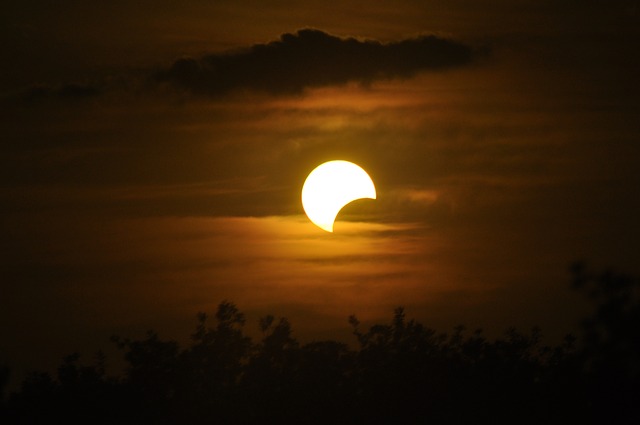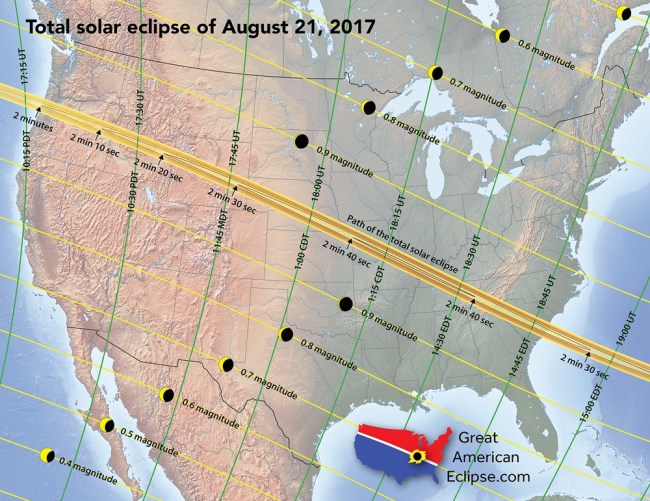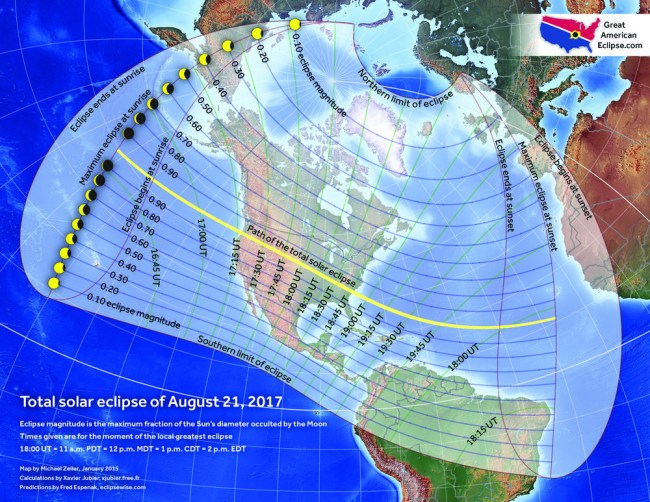June 8, 1918, was the last time that there was a solar eclipse that passed over the continental United States from coast to coast. This once-in-a-lifetime phenomenon will happen again on Monday, August 21 and tens of millions of Americans will be able to see it, but most of the country will miss out on the total eclipse. That total solar eclipse will only be able to be seen on a relatively narrow path that is nearly 70 miles wide. The last time that there was a solar eclipse to grace the continental U.S. was back in February of 1979 when one crossed the Pacific Northwest.
The 2017 solar eclipse will begin its U.S. tour with a journey that stretches 2,500 miles diagonally from west to east. It will be visible across 12 states and will start in Oregon, then to Idaho, Wyoming, Nebraska, Kansas, Missouri, Illinois, Kentucky, Tennessee, Georgia, North Carolina, and finally in South Carolina. The 2017 total solar eclipse will kick off on in Newport, Oregon, at 17:15:50.6UT (around 10:15 in the morning). The solar eclipse will leave American soil at 2:49:07.4 p.m. on an isolated beach on a barrier island at the wildlife preserve Cape Romain which is northeast of Charleston, South Carolina. Depending on your location, the total eclipse, which is called the umbral cone, can last between 1 minute to 2 minutes and 40 seconds.
So what exactly is a total solar eclipse? That’s when the moon aligns perfectly to completely block the sun and cast a gigantic shadow on Earth. Because the orbits of the moon, Earth, and sun are not perfect circles, are tilted, and elongated, total eclipses are not in the same location every time. A lot of total eclipses can happen in a remote location on the planet or at sea. Sometimes the moon is too far away and doesn’t block out the sun completely, that causes a “ring of fire” around the moon and is known as an annular eclipse.
For a few minutes in August, day will turn to night and stars and planets may become visible in the sky. The temperature will drop noticeably and nature may go silent as animals are freaked out by the abrupt darkness.
It is advised that eye protection be used since looking directly at the sun anytime can cause permanent damage. The best way to watch a solar eclipse is with special glasses with lenses made from a solar filter that is thousands of times darker than any personal sunglasses. If you aren’t able to be in the path of this extraordinary occurrence then there will be plenty of live-streaming services including NASA.
NASA data visualizer Ernie Wright created a video that illustrates how the total eclipse will be seen as it crosses the United States. He points out that the moon is not a perfect circle so it will affect the shadow on Earth. “We know that the moon isn’t smooth,” Wright says. “Around the edge of the moon we have these sort of jagged peaks and valleys.” The moons shadow’s shape will not be a circle, but “more like a polygon.”
The next time there will be a total solar eclipse in the U.S. is in April 2024, when the skies will go dark in Texas, and then move up through the Midwest and the northeastern United States.


